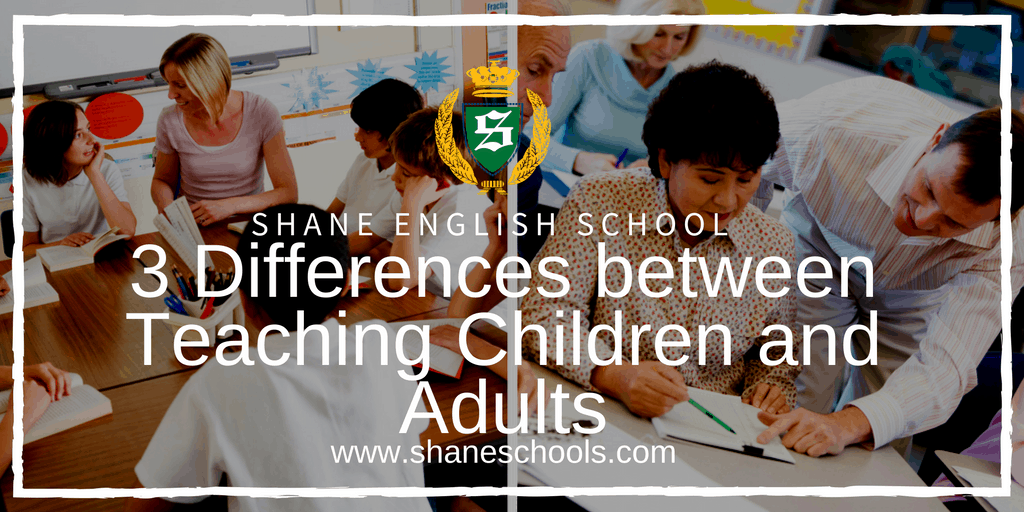Teaching is a skill unto itself, but teachers need to modify their styles to accommodate their students. One of the most critical factors in determining a student’s abilities is their age. Even when teaching the same material, there are major differences between teaching children and adults.
Being a TEFL teacher will open you to a range of teaching possibilities. You may find yourself teaching kindergarten in Shanghai, university students in Berlin, or businessmen in Buenos Aires. And while each teaching situation will have its own specific characteristics, there are some generalisations we can make to ensure you don’t walk into a classroom of 5-year olds with the same lesson plan as for your 35-year olds.
Expectations
Children do not have as extensive a learning history as adults. Children won’t really be interested in how you do things because they won’t know any different. Children will happily go along with whatever activity you have planned and will look to you for guidance, and as long as you are having fun while you are doing it, you’ll be fine.
Adults, on the other hand, will walk into your classroom with expectations regarding your teaching methods based on their previous experiences of learning. They may be comfortable with a certain style of teaching which is dissimilar to your own, meaning that you may need to spend some time earning their trust and helping them to see the method to your madness.
Motivation
Children are very good at motivating themselves. Every day they will turn up at your classroom full of energy and overflowing with enthusiasm. At the same time, children have very short attention spans so you will need to change up your games and activities frequently to maintain these high energy levels.
For adults, motivation levels can vary depending on their mood and stress levels. Adults have a lot on their minds besides learning English and they will bring the stresses and problems of life outside the classroom with them into the lessons. If your adult students seem a bit down or deflated, it will be up to you to get them in good spirits again.
Autonomy
Children are, well, children. You can’t leave them alone and you can’t expect them to do things on their own. Teaching children means babysitting to a large extent, making sure they don’t stab each other with scissors and trying to help them to learn at the same time.
Adults can be trusted to work on their own and accomplish goals. They can work in groups without someone ending up in tears. They are (usually) happy enough to do their homework. However, they are also capable of complaining if they are not interested.
Young learners and adult learners are like chalk and cheese. Many teachers find that they prefer teaching a specific age but there is no reason why you shouldn’t be able to enjoy teaching any learner.
Click here for more on teaching young learners. Or you can learn more about with adults here.
About the Author
Kirsten is a DELTA-qualified teacher, teacher trainer and materials developer. She has taught in Thailand, China, Spain, the UK and Qatar, but now prefers to call South Africa home. She spends her most of her time drinking tea, blogging and satisfying her sweet tooth.
Blog: www.jellybeanqueen.wordpress.com
Instagram: jellybeanqueenblog
Twitter: Kirsten_clq

We're hiring!
With schools around the world, Shane English School always has exciting new opportunities to offer.


